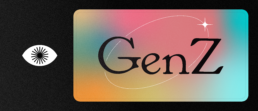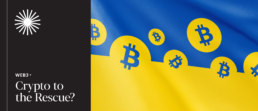Latinos in U.S. Advertising
MY FOUR YEARS REPRESENTING 62.5 MILLION PEOPLE
by Camila Mendoza Dukón, Producer/Project Manager at Illuminator
The Latino population in the US increased by 23% between 2010 and 2020; this growth is also represented in its purchasing power. According to a Pew Research Center report, we now represent approximately 18.7% of the population in the United States and a $1.5 trillion market opportunity.
And since there are 62.5 million of us (and rising), it’s important to remember we’re all different. People of Latin American origin don’t have as many common denominators as advertisers think. Not all of us like salsa dancing or watching “fútbol”; we’re not all Catholic, nor do we have the same political views. If that sounds similar to other audience groups you’ve been marketing to, that’s because it is. And as such, campaigns need to look past the “Latino” tag and talk directly to our interests.
As a Latino who’s also a marketer, I constantly look for ways to improve how the brands I work with talk to the target audience I represent. As a California-based Colombian, it has always interested me how different brands market to Latin American audiences in the US. This journey helped me rediscover myself both as the recipient and source of these messages.
Here are some notes I’ve taken throughout my career in the US:
Find the similarities among the differences
As immigrants or children of immigrants, we have common experiences that automatically connect us. Most of us share a homeland and/or family nostalgia that can be nurtured with music, food, and stories. Not all of us celebrate Día de los Muertos, but we all long for our abuelas. Find the right way to incorporate your brand storytelling into the things that move your specific niche.
Real representation matters
Inserting a “Latino” in your ad won’t cut it; it frequently feels like trying too hard. Let us know how your brand fits into our lives. If you are in F&B, show how your product can improve our dishes; if you are a beauty brand, include various skin tones and hair types in your tutorials. Look at what Latino influencers are doing, talk to them, include them and empower their voice with your message
Use clever references
The times when it was ok to represent us as Bandidos and Señoritas are over. Cringy and outdated references will only make us run away from your brand. Embrace different current Latino representations; think Oscar Isaac, Ana de Armas, or Jenna Ortega, just to name a few in the mainstream. “Latinidad” is not always bombastic; it can also be intellectual and subtle.
Language, por favor!
Not all Latinos live a Spanish-dominant life. Some of us communicate mostly in English and a lot in Spanglish. Adjusting this in your messaging will probably make it more effective; take the pulse and don’t force it. Finding the right proportion of slang and proper language can be tricky, but the results will be worth it. Authenticity is key.
Be consistent
Hispanic Heritage Month campaigns are just a tiny part of what brands need to do to reach and empower this demographic. Let us know we’re more than the flavor of the month between mid-September and mid-October; show a real interest and create resources that manifest that interest. Build a version of your website in Spanish, and hire more bilingual voices throughout your organization. More showing and less telling is always appreciated.
Like any other audience, we want to be heard. Don’t turn our flavor and attitude into a cartoonish representation, and always—always—do your research and listen to your audience. Invest in getting the right tools and team; your work will be appreciated and rewarded.
If you’re trying to figure out how to incorporate these tips into your marketing, throw us a line. The Illuminator team is here to help.
Illuminator is a digital-first advertising agency designed to show brands the way forward in an ever-shifting media landscape. We believe every brand has a compelling story to tell. We’ll help you tell yours.
We’re the agency you’d create if you were creating an agency today.
Illuminator Illuminates: Generation Z
SHINING A LIGHT ON AN EMERGING GENERATION
Generation Z (born between 1997 and 2012) now makes up 25% of the population. As marketers, it’s important to understand what makes them tick. This is no easy task. The generation hasn’t fully crystallized as consumers; the youngest members of Gen Z are just entering adolescence, while the oldest recently settled into the workforce. (Be mindful their office might be a studio apartment with fancy HD cameras and ring lights.)
The good news is we have insight into how to capture their attention and loyalty. First, some context: Unlike previous generations, Gen Zers were born into a world saturated with technology—they never knew life without the internet or smart phones. Engaging them with compelling digital experiences is key. They’re tech savvy, but wise enough to refrain from sharing too much information online. (For example, the idea of posting a hundred photos on Facebook from a night out makes them cringe.) They don’t use social media to broadcast their entire lives, but rather to connect more deeply with their circle.
Since they’ve always had the Internet at their fingertips, convenience in any experience is table stakes. But convenience isn’t the only thing they care about; they’re savvy shoppers, too. They often compare different products from different retailers so that they can get the best prices or discounts available. Gen Z also tends to look for reviews or feedback from other customers when researching online, so it’s important for companies to ensure their customer service experiences are positive ones.
Here are some high-level things to keep in mind if you want to resonate with Gen Z:
Make it Useful
Gen Z-ers seek out new technologies and applications that will make their lives easier and more efficient. Don’t just make something catchy; make something with utility.
Make it Experiential
Gen Z is all about experiences over anything else (even more than Gen Y). They want to spend their money on experiences rather than material possessions, and they want those experiences to be social and useful.
Make it Visual
When it comes to content preferences, Gen Z gravitates towards visual content over text-based content. That means videos, GIFs, images, infographics—anything that stands out visually will grab their attention more effectively than plain text alone ever could.
And Most Importantly: Make it Meaningful
Gen Z is passionate about making a difference in the world, and are more likely than older generations to support causes related to climate change, inequality, or diversity. They expect brands to have a position on social issues, and they use that info to make their choices.
As Gen Z continues to define itself, brands should be ready to look inward to ensure they resonate with this emerging generation. More than any other generation, Gen Z wants to interact with brands that are aligned with their worldview. Your brand needs to know what it stands for. Thing is, this has always been true. But it’s even more important today. Bring what’s good about your brand to the forefront, and Gen Z will gravitate towards you.
And if you need help reaching this next generation, or even defining what you’re all about, Illuminator is here to help.
Illuminator is a digital-first advertising agency designed to show brands the way forward in an ever-shifting media landscape. We believe every brand has a compelling story to tell. We’ll help you tell yours.
We’re the agency you’d create if you were creating an agency today.
Signal Flares: I.5
Since the start of COVID-19, approximately 45% of global consumers are wanting to consume beverages and foods that “boost their immune systems,” according to Innova Market Insights. On top of this, two-thirds of American consumers have increased their consumption of vitamins and supplements. What these numbers demonstrate is just how much the food industry has changed over the course of the pandemic.
Brands could tap into this trend by including ingredients & flavors that consumers will recognize as immunity boosting, such as elderberry, citrus, and other berry flavors. Alternately, they could focus on this mindset by stating what they’re doing to promote good health (e.g. emphasizing vitamin & mineral content or touting sanitary practices).
Signal Flares is a series of microblog posts that cover compelling trends in Web3 and Food.
Illuminator is a digital-first advertising agency designed to show brands the way forward in an ever-shifting media landscape. We believe every brand has a compelling story to tell. We’ll help you tell yours.
We’re the agency you’d create if you were creating an agency today.
Signal Flares: I.4
No industry is exempt from the unrelenting encroachment of technology. It’s just that food has seemed to have a degree of resistance, thanks to its perishable nature and access to extremely low labor costs. This is rapidly changing, as companies are turning to automation as a solution to a labor force compromised by the pandemic. Things like kiosks that replace cashiers and food preparation machines will become increasingly ubiquitous in the coming years.
Signal Flares is a series of microblog posts that cover compelling trends in Web3 and Food.
Illuminator is a digital-first advertising agency designed to show brands the way forward in an ever-shifting media landscape. We believe every brand has a compelling story to tell. We’ll help you tell yours.
We’re the agency you’d create if you were creating an agency today.
Making Brilliant Brand Books
Is your brand in need of a bible?
Good brands don’t just happen; they grow from great ideas. It takes significant thought and hard work for a branding agency to transform a great idea into a great brand. One of the most valuable tools you can use to guide this process is a brand book.
What are brand books, anyway? Regardless of the name, these books contain formal guidelines & helpful directions on how a brand should look, feel and behave. A brand book defines that foundation, and the way you’ll articulate your identity to the world.
Here are three tips for making brand books shine:
1. Make them accessible to a broad internal audience.
The best branding agencies know brand books need to connect with a range of internal stakeholders. It’s critical to get buy in from a variety of people: from the creative teams who will use the guide every day to the senior team responsible for overall strategic decisions. You should be able to give a good brand book to anybody—from CMOs, to trained designers, to neophyte brand managers—and they’ll instantly understand how to articulate that brand and its specific voice. The best branding agencies will ensure a diverse team collaborates on the project both on the agency side and client side alike.
2. Less is More.
A brand strategy is pointless if no one will use it. So your brand book needs to be accessible to anyone who might need it. Keep it simple. Define where your brand has the most emotional resonance and why people should care. Define your brand’s personality. Articulate the brand’s value proposition. Set clear, clean rules for the visual expression of your brand identity, including logo usage, color, typography, photography and other elements. Then go back and make the whole thing shorter. By a lot.
3. Take a Stand.
There is no room for watered down brands in today’s marketplace. “Rounding the edges” of your brand strategy in an effort to make your company appeal to everyone invariably results in a brand that resonates with no one. Invest some time considering & articulating what your brand is NOT about; who it’s NOT for. Work with a good brand agency to instill clarity into your brand strategy via a thorough exploration of the dos and the don’ts.
Illuminator has helped dozens of marketers tightly define their brand strategy and identity. Whether you’re looking for a new logo or visual system, or a complete overhaul of your brand strategy, we’d love to help.
Illuminator is a digital-first advertising agency designed to show brands the way forward in an ever-shifting media landscape. We believe every brand has a compelling story to tell. We’ll help you tell yours.
We’re the agency you’d create if you were creating an agency today.
Signal Flares: I.3
The Ukrainian Government established a website to solicit cryptocurrency donations from the global community following the Russian invasion. The site invites people to contribute 13 different cryptocurrencies (as well as USD), and has secured $60M (and counting) to date. “This is not just the war against centralized regime,” offered Mike Chobanian, president of the Blockchain Association of Ukraine, “this is the birth of blockchain as a backbone of global security.”
Signal Flares is a series of microblog posts that cover compelling trends in Web3 and Food.
The Pillars of Web3
WEB3 IS THE FUTURE OF THE INTERNET...
…and Illuminator’s modern marketing playbook is already helping Web3 brands succeed. Let’s take a look at the pillars that make up the space:
Decentralized Approach
Decentralization is key to understanding Web3. Due to its community-first nature, marketers need to focus on what the users want, rather than what the brand demands. As we move into a Web3 world, brands will need to cede control to the community. It’ll be scary. Maybe even counter-intuitive. But by integrating into the community, successful brands will enjoy a level of loyalty and engagement that doesn’t exist today.
Autonomy over Data
A big part of Web2 was corporations selling consumer data. Hence all the privacy concerns and trust issues we see today. Web3 resolves this conflict by giving users autonomy over their data—they get to decide who has access to their info. This will make data collection more difficult, and strong brands even more important.
Semantic Web Incorporation
If Web2 was about making the Web easier to read for people, Web3 is about making it easier to read for computers, via the semantic web. It’s a technology that utilizes layers of metadata and makes the web more comprehensive and readable. (Recent examples of this technology include Siri and Alexa.) The Semantic Web will help to refine, generate, and share better content due to software becoming more adept. It will also help marketers find the right keywords that best match the user’s inquiry, thus making the web more comprehensive for all.
Community-Created Content
Web2 ushered in the notion of user-generated content, but brands quickly realized that expecting fans to create and share quality content was unrealistic; there was little motivation to do so. With communities having ownership in Web3 brands, members have a vested interest in stoking growth. Brands can lean into this by providing tools, guidance, and incentives. Brand-generated content is still important. But content generated by the community is more important than ever.
Need a Web3 ad agency? If you’re interested in beating your competition to the next digital epoch, Illuminator has invaluable experience and a fantastic network. Why not reach out? We’d love to chat!
Illuminator is a digital-first advertising agency designed to show brands the way forward in an ever-shifting media landscape. We believe every brand has a compelling story to tell. We’ll help you tell yours.
We’re the agency you’d create if you were creating an agency today.
Signal Flares: I.2
The number of vegans across the globe is relatively small, but rapidly growing. As vegan brands like Beyond Meat, Impossible Foods, and Oatly rise to the occasion, an interesting trend is happening. Omnivorous consumers are enjoying vegan options as well. Whether they’re more aware of the environmental implications of farming livestock, or simply interested in trying new flavors, these Plant-Curious consumers are proving to be strong allies for the vegan movement.
Signal Flares is a series of microblog posts that cover compelling trends in Web3 and Food.
Signal Flares: I.1
Does Web3 have the potential to reinvent character-based I.P.? Cuy Sheffield thinks so, and makes a thought provoking argument on a16z’s Tech Trends blog. Great character-based I.P.–e.g. Marvel, Star Wars, Harry Potter— succeeds at building gigantic, engaged fanbases. (It also succeeds in lining the pockets of a select few companies.) If Web2 enabled fans to easily invest in these characters (i.e. buy stock in Marvel Entertainment), why can’t Web3 enable fans to easily participate in—and profit from— their creation (i.e. through an ingenious DAO)?
Examples:
- The MV3 Universe, co-created by Stranger Things writer Jessie Nickson-Lopez, is a collection of 6,500 NFT characters populating a world that will be brought to life in comic books, video games, films, and more. Holders of an NFT get to participate directly in the upside of the IP.
- Kevin Smith’s next film “Killroy Was Here” can only be seen by “unlocking” it with one of 5,555 NFTs he’s releasing. The NFT also enables collectors to become artistic collaborators in creating the sequel to the film.
- Pop culture toy company Funko is expanding from physical toys to digital collectibles and opening up an entirely new revenue stream. They’re releasing a series of Transformers NFTs inspired by trading cards, and collectors can exchange rare cards for exclusive physical prizes.
Signal Flares is a series of microblog posts that cover compelling trends in Web3 and Food.
Demystifying DAOs
ILLUMINATOR IS BULLISH ON THE MARKETING APPLICATIONS OF DECENTRALIZED AUTONOMOUS ORGANIZATIONS.
In simple terms, DAOs are 1) a community of people 2) united by a mutual interest 3) who buy voting rights in the group.
The decentralized nature of DAOs ensures no individual has absolute power; instead, decision-making is autonomously controlled via votes from the members of the organization. It’s designed to divest an organization from human egos & foibles that could hold it back, by letting blockchain technology take over most of the governance work. Much of this governance is controlled by smart contracts, which are applications of blockchain technology that rely on a decentralized, immutable public ledger. Smart contracts are carefully written in advance to establish rules around the variety of decisions that could arise over the life of the DAO. Note that members are regularly voting on governance, though. How the DAO will work and what its focus will be are still very much in the hands of humans. Check out this helpful explainer video from Forbes for a slightly deeper dive. In the meantime, here’s a practical example combining Web3 technology with another passion of ours: wine.
Imagine you run a vineyard in Wine Country. Competition is fierce, as the 800+ wineries spread across Napa and Sonoma counties make it difficult for your wine brand(s) to stand out. You created a subscription club to cater to your fans; in Web1, it was supported with a website and email newsletter. In Web2, you started curating a social media presence, and added a mobile site. Yet, you feel your club could be better. More valuable. More meaningful.
Enter Web3. You decide to convert your subscription club to a DAO. This is no small decision, as it means you are surrendering control, essentially spinning off an autonomous organization. While it seems daunting, you’re replacing one-on-one relationships with one relationship. A big, powerful customer who already loves you, and has a vested interest in helping you thrive.
You carefully design smart contracts that align the DAO with the capabilities of your vineyard—you want to ensure the DAO’s expectations are realistic, e.g. voting to produce a type of wine your land can accommodate. Once these foundational elements are established, interested individuals buy a stake in the DAO in the form of a unique token the winery creates. The proceeds from the token sale fuel the logistics of the subscription program. Members buy into it every year to get the usual benefits of a wine club: priority access to exclusive releases, events, experiences, etc. But beyond this, they become engaged, active participants in steering a course for your DAO-backed brand(s). They might contribute input on formulations, names, packaging, membership benefits and more. They could even weigh in on what wine bars, restaurants and more represent the best partnership opportunities. The winery surrenders a degree of ownership, but that’s in exchange for having a passionate group of customers with skin in the game. A more than fair exchange in our opinion.
By putting the end consumer at the center with Web3 technology, wineries could change the ways their wines are developed and create more meaningful, useful, and profitable communities around their brands. Illuminator is eager to help any brand navigate the possibilities of Web3. We’re already doing so in the gaming and entertainment space for NOR and Consortium9 Labs. And if you just so happen to work for a winery, well, our team has deep category experience, driving success for numerous wine brands back in the Web2 days.
Web3 is changing everything. And brands who don’t accept the inevitability of Web3 technologies like blockchains, DAOs, and tokens risk putting themselves irreparably behind. As a Web3 brand agency, we’re constantly encouraging our partner brands to look beyond the hype—both the positive and negative news cycles—and embrace these promising new technologies. Web3 is all about building brands with passionate communities at the heart, and DAOs provide a revolutionary means for doing so.
Illuminator is a digital-first advertising agency designed to show brands the way forward in an ever-shifting media landscape. We believe every brand has a compelling story to tell. We’ll help you tell yours.
We’re the agency you’d create if you were creating an agency today.










